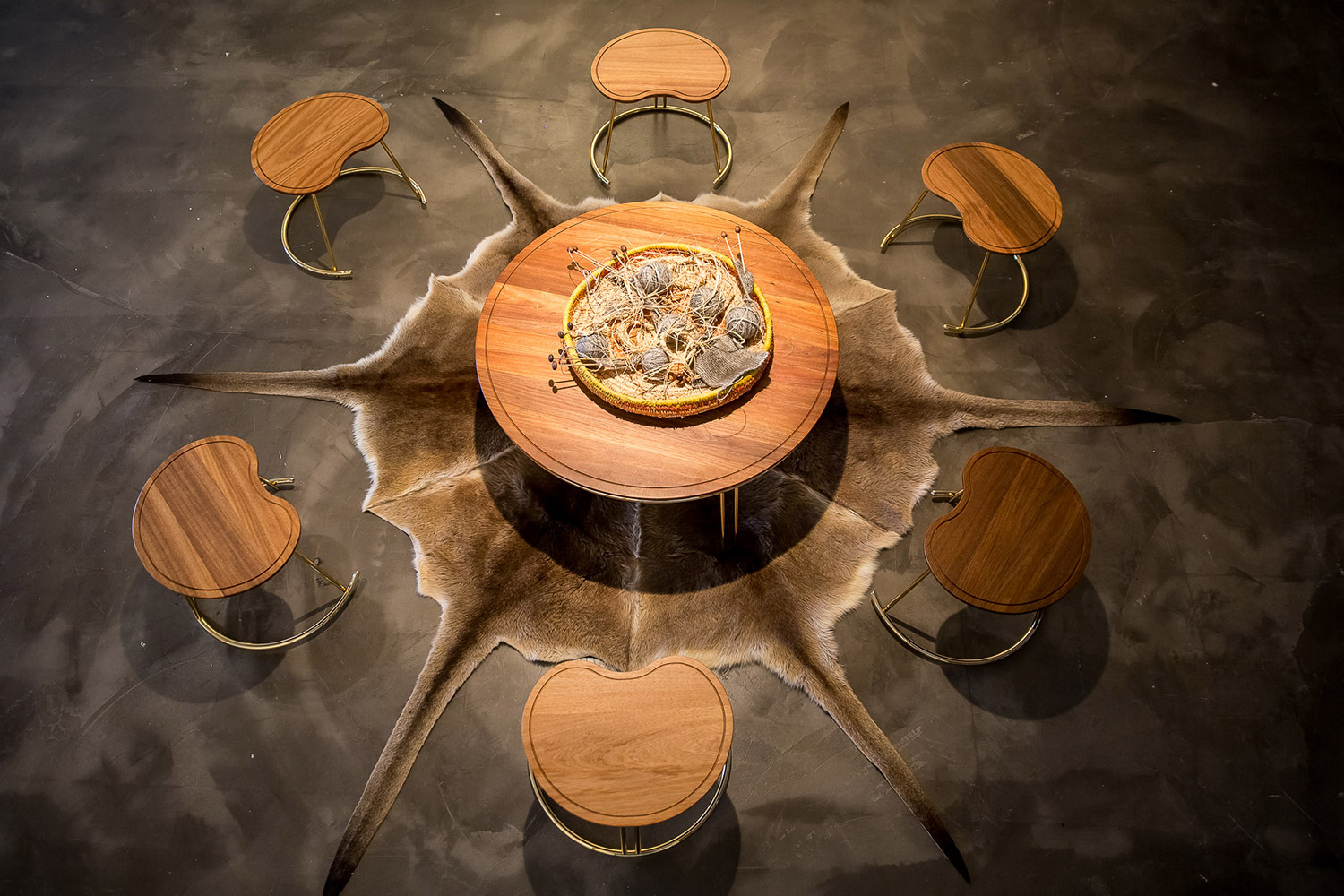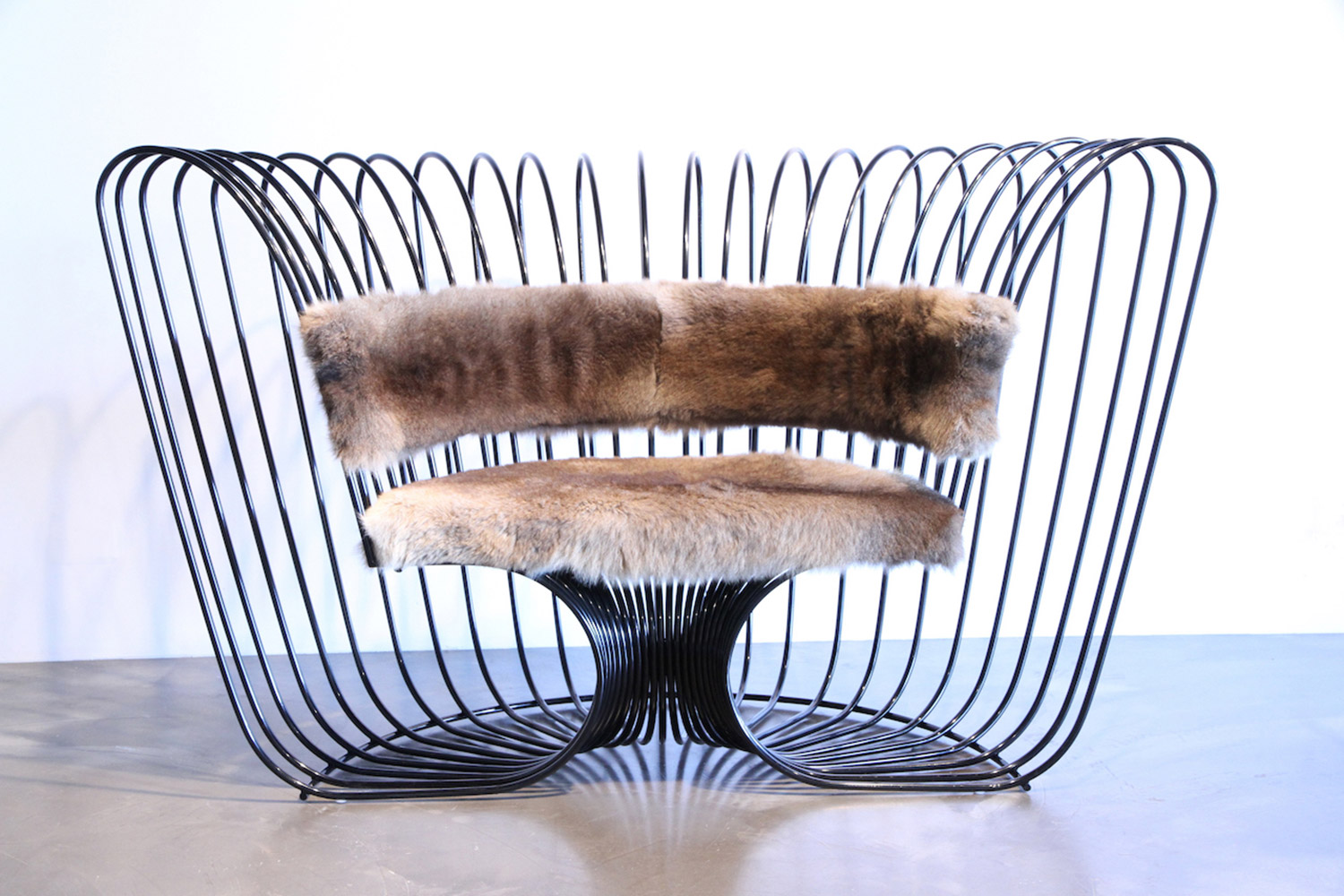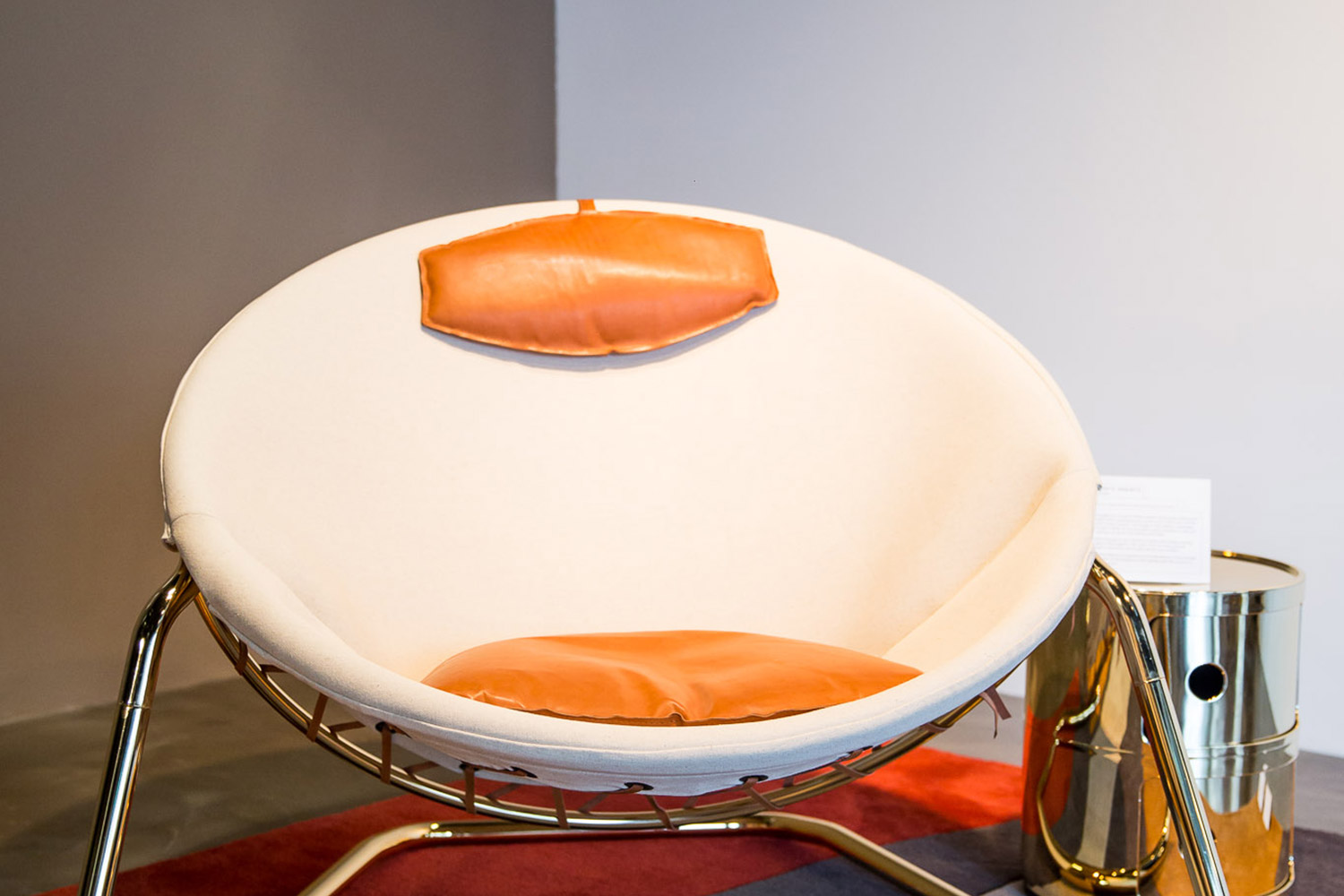Marlu
Blackandwhite Creative
Indigenous artist Nicole Monks doesn’t see the unveiling of her new furniture range, Marlu (meaning “kangaroo”), as a product launch. “It’s the start of a conversion about Aboriginal design, its importance to Australia and to all of us as part of this land,” she says. Pieces from the collection are custom built to order. They incorporate Monks’s signature look that features muted shades of the Australian outback. Materials might include kangaroo leather and fur; blackwood timber; and Tasmanian oak set against vivid finishes of powder-coated steel in black and gold.
The emerging designer and recipient of the Arts NSW Indigenous Design Mentorship (which won her a 12-month mentorship with Top3 by Design founder Terri Winter) believes the pieces are more than functional or aesthetic. They represent the importance of knowledge transfer from generation to generation. Monks takes culturally significant stories and weaves them into her contemporary works.
Marlu was inspired by a traditional story told by Monks’s great-great grandmother, and her kangaroo tail stew. Each piece is named using Wajarri Yamatji words, a nod to Monks’s heritage.
The Wabarn-Wabarn chair is symbolic of the kangaroo. It is made from kangaroo leather and fur, timber and copper-plated steel. The Walarnu chair takes inspiration from the shape and movement of the boomerang used for hunting kangaroo; it has bold steel curves that form a functional, minimalist piece. The dining setting, Nyinajimanha (which means “sitting together”), represents coming together to eat the kangaroo-tail stew. Its short table and chairs sit at a low level, subtly separating diners from the outside world and invoking intimate conversation. Monks injects story, tradition and identity into each piece. “Sometimes it’s the things that we don’t see that guide us,” she says. “And it’s the story that we build together that creates the history of now.”



